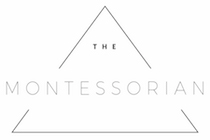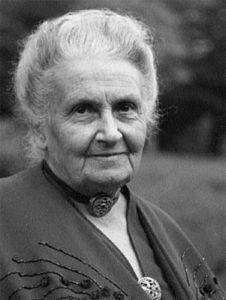Note: All opinions expressed here are those of the author (derived from extensive research), unless otherwise stated. All references that were used are stated.
Early home life
Maria Montessori was born in 1870 in the Italian town of Chiaravalle, Ancona (Kramer, 1988; Röhrs, 2000; Standing, 1957; Stewart-Steinberg, 2007). She was an only child whose father, Alessandro Montessori, was a conservative, military man from a noble home, and whose mother, Renilde Stoppani, was the niece of Antonio Stoppani (a well regarded philosopher-scientist-priest) and known for her piety and charm (Kramer, 1988; O’Donnell, 2007; Röhrs, 2000; Standing, 1957). Standing (1957) stated that there was great affection and understanding between the two women and that Renilde believed in discipline, evident in Montessori’s works (Standing, 1957).
Montessori inherited an innate sense of personal dignity and authority, and an outlook on life from Renilde and Antonio Stoppani, which was apparent even as a child (Kramer, 1988; Standing, 1957). She also developed an early predisposition for peacemaking and an interest in assisting the poor (Kramer, 1988; Standing, 1957). These mature traits, along with her keen interest in mathematics, affected the way she was viewed and understood by children and adults alike, frequently in a negative way (Kramer, 1988; O’Donnell, 2007; Röhrs, 2000; Standing, 1957). Standing (1957, p. 23) cited negative early educational experiences as influencing the significance she placed on “…treating even the smallest child with a respect that amounts almost to reverence”. Despite some negative experiences, young Montessori was an enthusiastic and curious learner due to Renilde’s encouragement and support (Kramer, 1988).
Educational context
There are differing accounts of when and why Montessori’s family moved to Rome. Kramer (1988) and Stewart-Steinberg (2007) argued that it was due to her father’s work, whilst Standing (1957) believed it was to gain a better education for young Montessori than the Ancona state school could offer. Whatever the case was, it was here that, rather than follow convention and train to be a teacher, Montessori continued her studies in mathematics and science by enrolling in a boys’ technical school with the view of becoming an engineer (Kramer, 1988; O’Donnell, 2007; Standing, 1957; Stewart-Steinberg, 2007). She enrolled in the Regia Scuola Tecnica Michelangleo Buonarroti in 1883 at the age of thirteen (Kramer, 1988).
Further experiences of the limitations of education offered at the time “… gave her a clear model of what a school should not be” (Kramer, 1988, p. 32). Here, she again changed her mind about her future career, moving away from mathematics and engineering and towards biology and medicine (O’Donnell, 2007; Standing, 1957; Stewart-Steinberg, 2007). However, she encountered many impediments before she was able to even enroll at the University of Rome to study medicine (O’Donnell, 2007; Röhrs, 2000; Standing, 1957). Montessori continued to confront many difficulties throughout her studies due to her gender (Kramer, 1988; O’Donnell, 2007; Standing, 1957), but Kramer (1988) and Standing (1957) both agreed that she gradually gained “… a sort of grudging admiration” from her fellow students due to her “pluck” (Standing, 1957, p. 24). She also had to overcome the disapproval of her father for her chosen occupation, although her mother always believed in her ability to succeed in it (Kramer, 1988; Standing, 1957).
She won many scholarships throughout university and paid her way through with private tuition, which Standing (1957, p. 24) stated as influencing her later ideas about “… the value of economic independence in adolescent development.” Her perseverance, dignity, and independence supported her through those early years at university, until she graduated in 1896 with a Doctorate of Medicine and Surgery with honours and a study of neuropathology .
During her final years studying medicine, she worked as a surgical assistant and assistant doctor at the women’s hospital of S. Salvatore al Laterano, the Ospedale Santo Spirito for men, and the Regia Clinica Psichiatrica (Gimbel & Emerson, 2009; Kramer, 1988; O’Donnell, 2007; Standing, 1957). She continued to work at the Psychiatric Clinic after graduating, where she worked with children with additional needs (Kramer, 1988; O’Donnell, 2007; Standing, 1957). During this time, she observed that these children had the same desire to learn and play as any other child, so began exploring educational opportunities for them (Gimbel & Emerson, 2009; Kramer, 1988; Standing, 1957). It was also at the University’s Psychiatric Clinic that she first met Dr Giuseppe Montesano, whom she worked with closely on common interests over several years, and who fathered her son, Mario, born in 1898 (Kramer, 1988; O’Donnell, 2007).
Montessori was so inspired by her experiences with the children at the clinic (and with a need to remove herself from the distressing personal situation with Montesano) that she returned to the University of Rome in 1897 to study pedagogy in the department of philosophy, and some psychology topics (Gimbel & Emerson, 2009; Kramer, 1988; Standing, 1957). Her passion for improving the lives of children with additional needs continued in her position at the Scuola Magistrale Ortofrenica from 1900 to 1901, where she trained special education teachers (Gimbel & Emerson, 2009; Kramer, 1988). In 1904 she was made a Professor at the University of Rome and occupied the Chair of Anthropology for some years (Standing, 1957).
Reference List
Gimbel, S., & Emerson, A. (2009). Montessori and the Uncited Influence of Hegel. Communications.
Kramer, R. (1988). Maria Montessori: A Biography. Chicago: Da Capo Press.
O’Donnell, M. (2007). Maria Montessori. (R. Bailey, Ed.). London: Bloomsbury Academic.
Röhrs, H. (2000). Maria Montessori (1870-1952), XXIV(1), 1–12.
Standing, E. M. (1957). Maria Montessori: Her Life and Work. New York: Plume.
Stewart-Steinberg, S. (2007). The Pinocchio Effect: On Making Italians (1860-1920). Chicago and London: University of Chicago Press.




